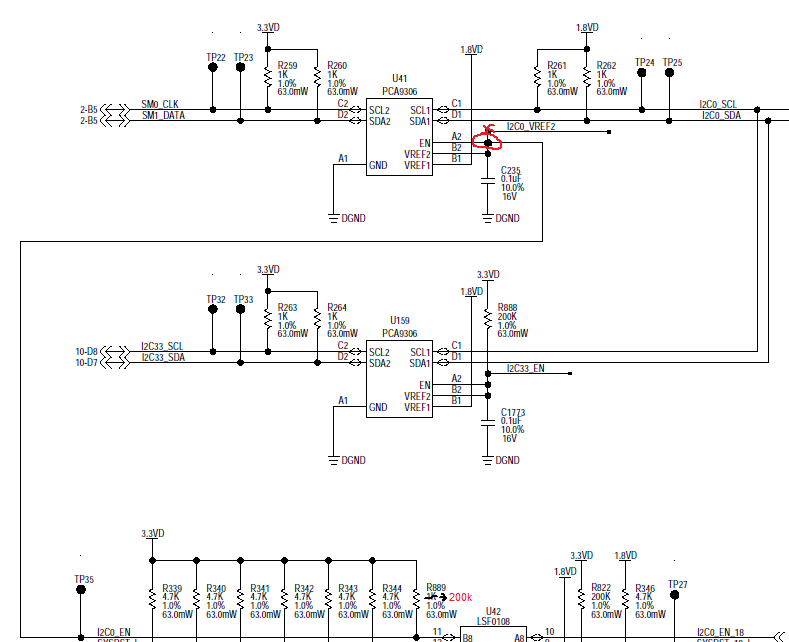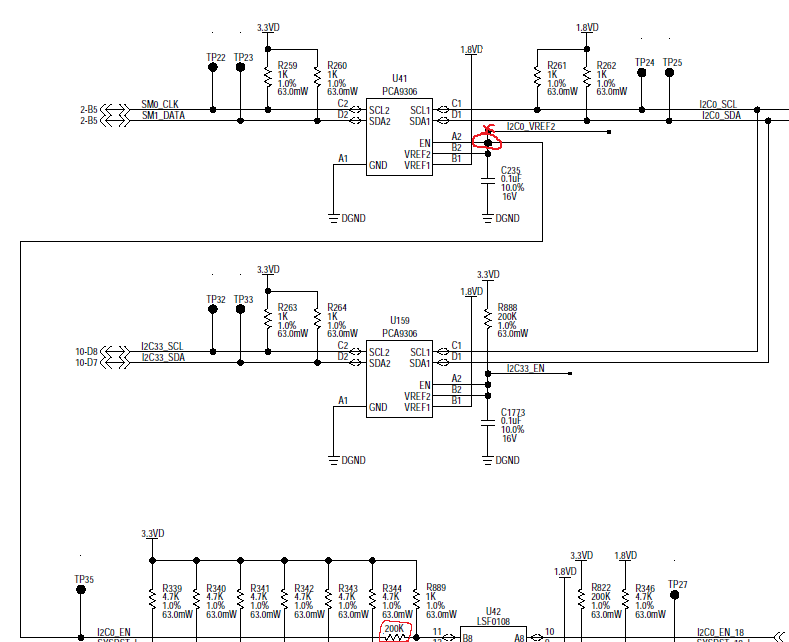I see some conflicting information in the datasheet of the PCA9306. On page 8 of the PCA9306 datasheet it states:
"the EN pin can be controlled by the output of a processor but VREF2 can be connected to a power
supply through a 200-kΩ resistor. In this case, VREF2 and EN shall not be tied together, and the SCL and SDA
switches will be in a high impedance state when EN is in a logic low state"
But, then I see it also states on page 11 the following:
"For the bidirectional clamping configuration (higher voltage to lower voltage or lower voltage to higher voltage),
the EN input must be connected to VREF2 and both pins pulled to high-side VDPU through a pull-up resistor
(typically 200 kΩ)."
In my design below I hooked it up as it states I can above from the datasheet from page 8. The value of the EN input is 3.3V, however, the value at R821 is 1.8V. That means that the VDPU is NOT VREF1+0.6V as VREF1 and VDPU are now both 1.8V.
Could I drive the EN and VREF2 from the output of the LSF0108 directly?
Thoughts?




